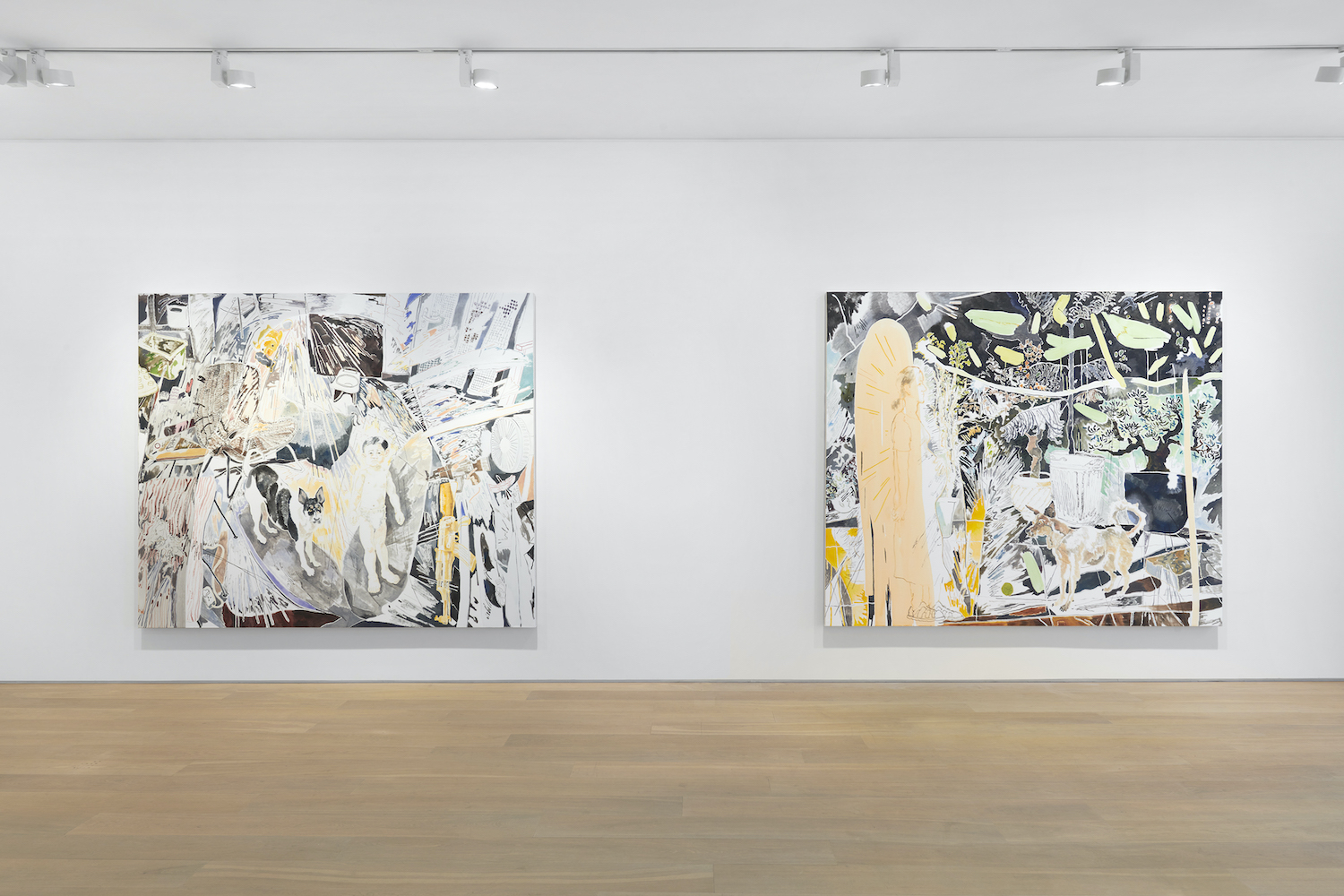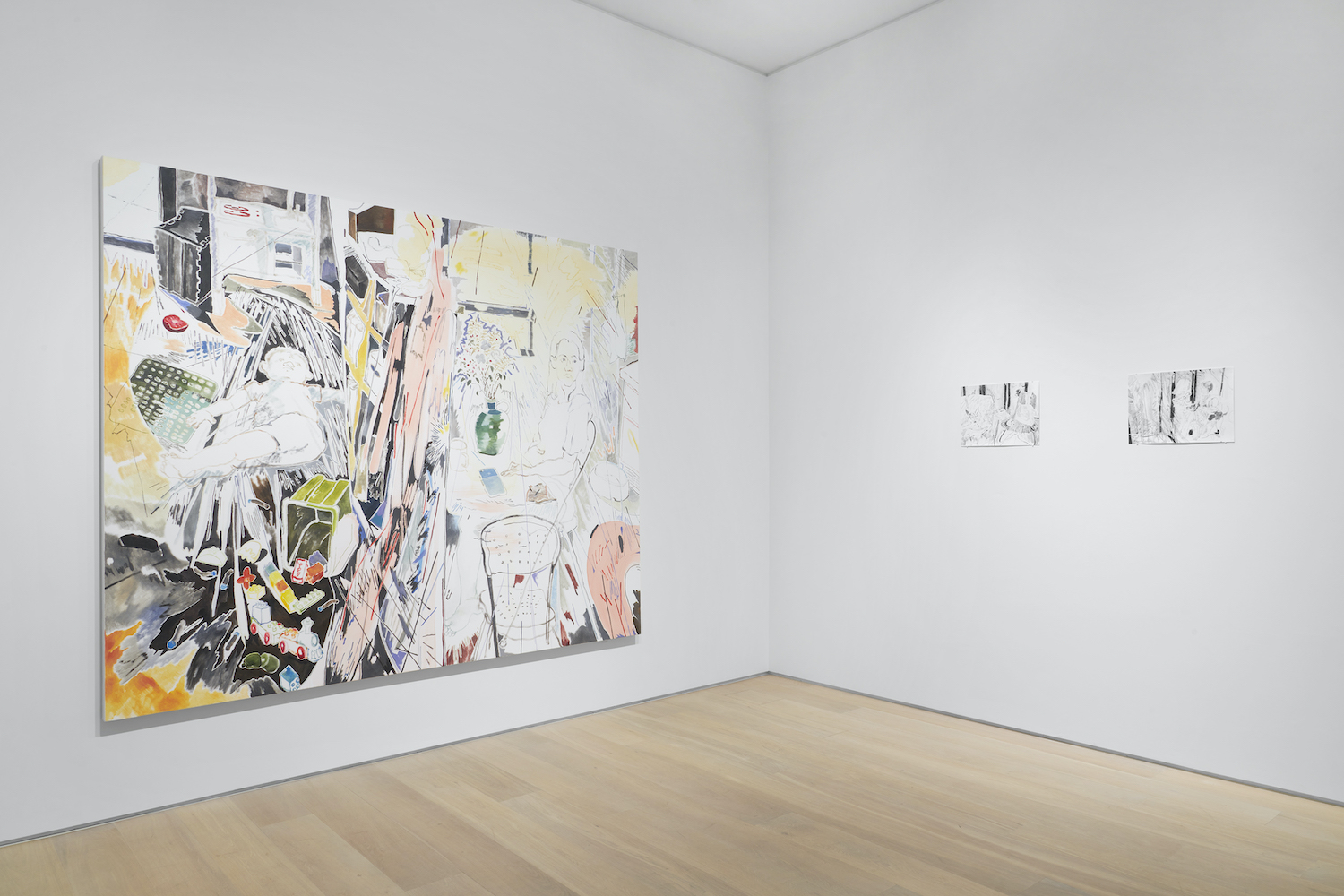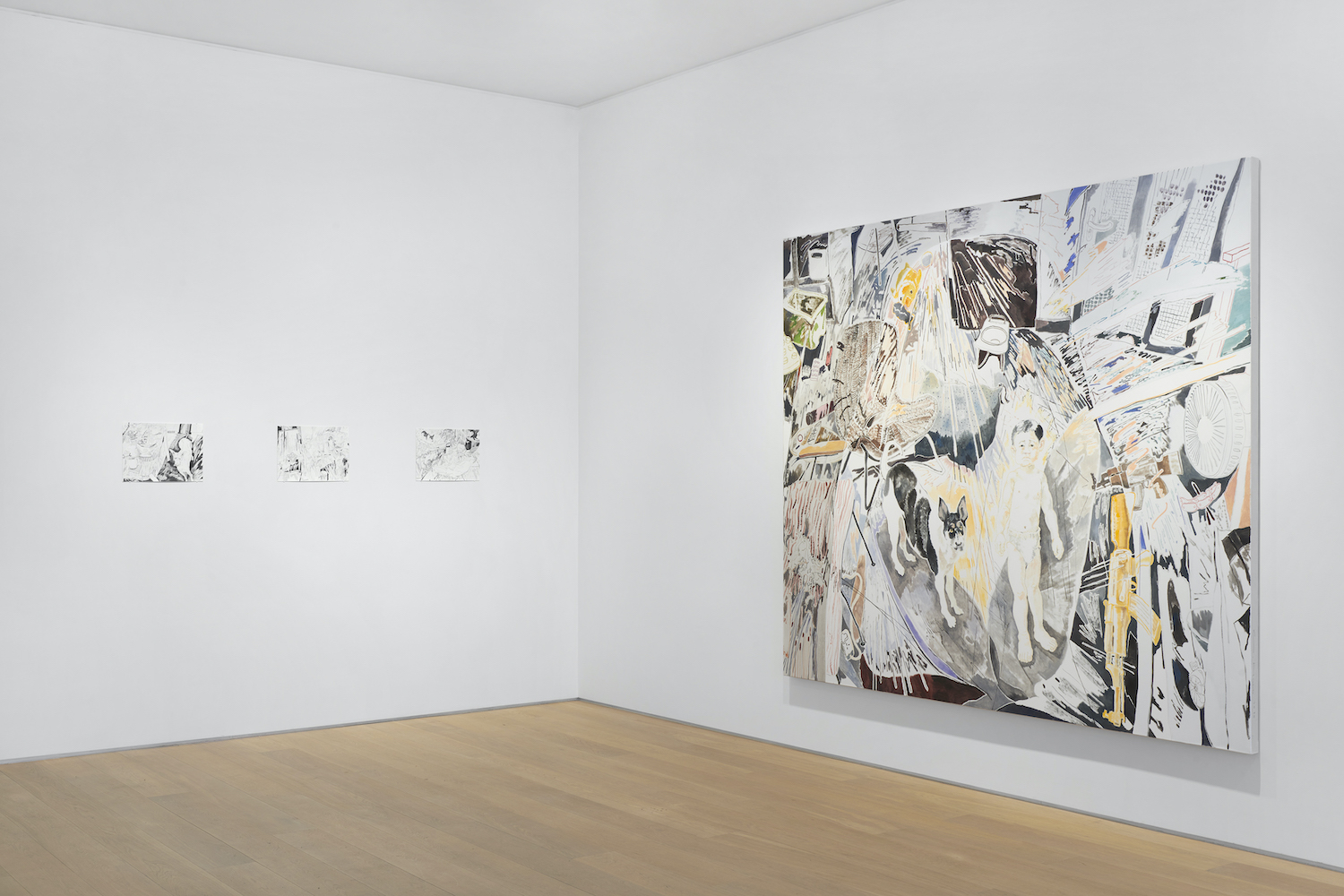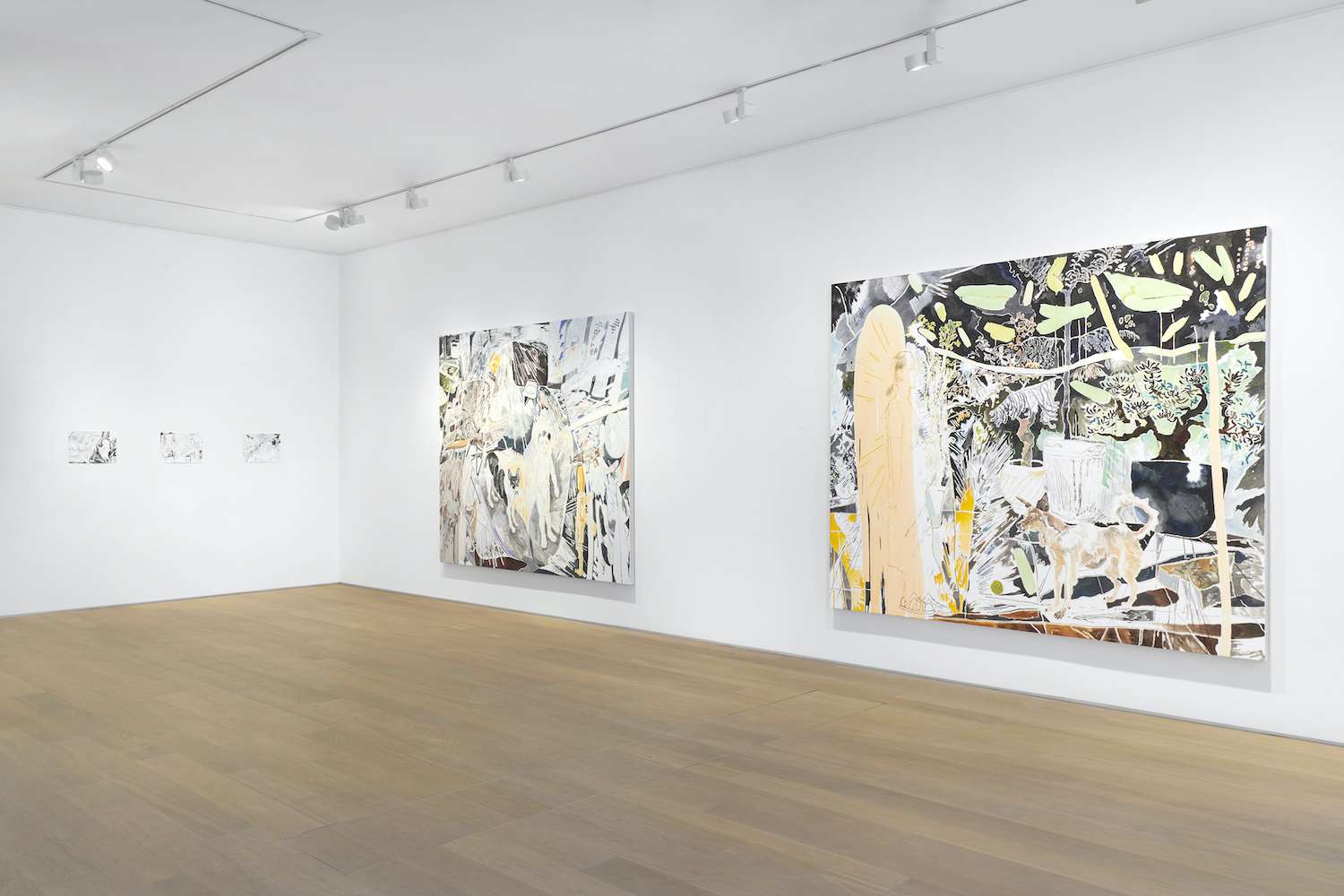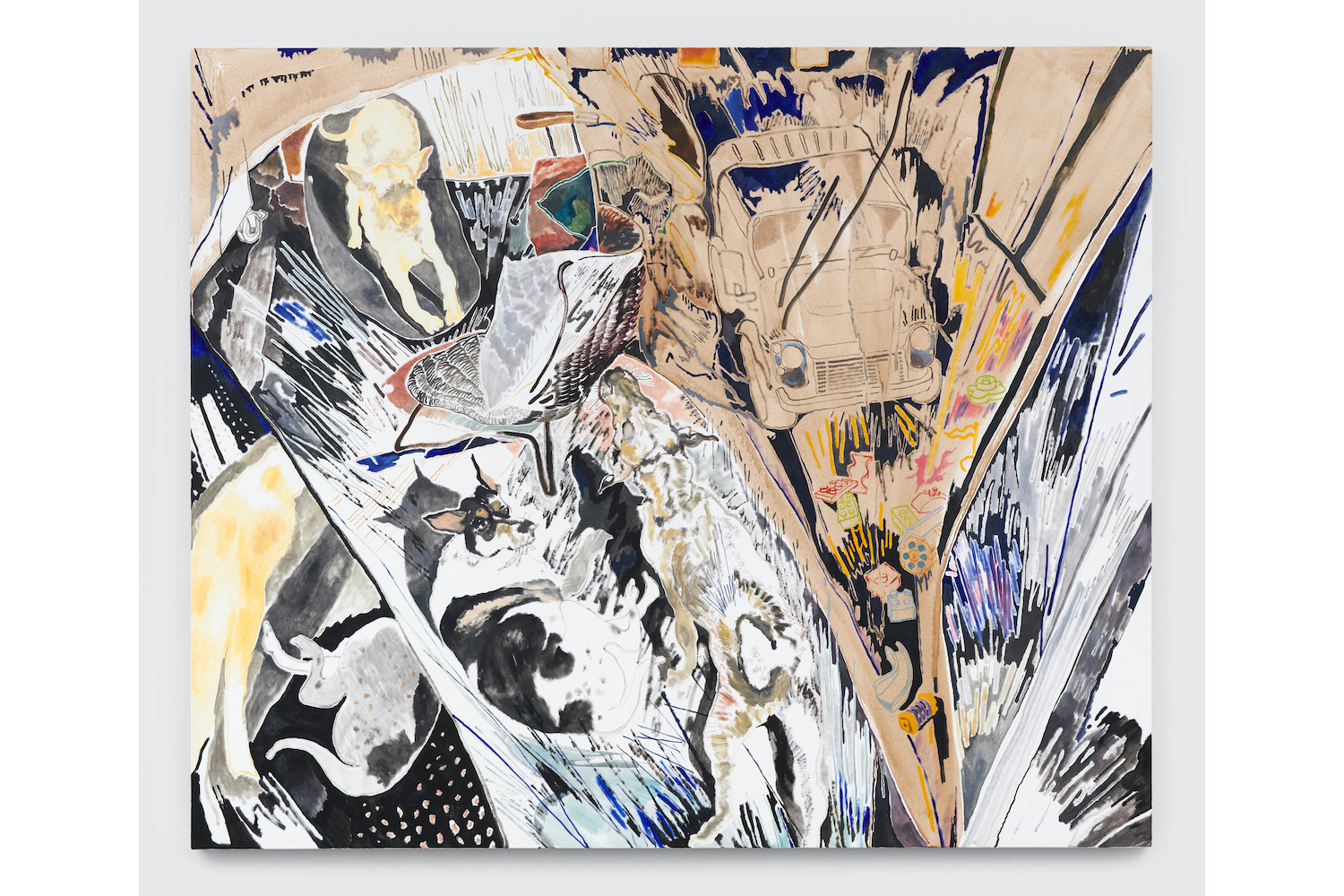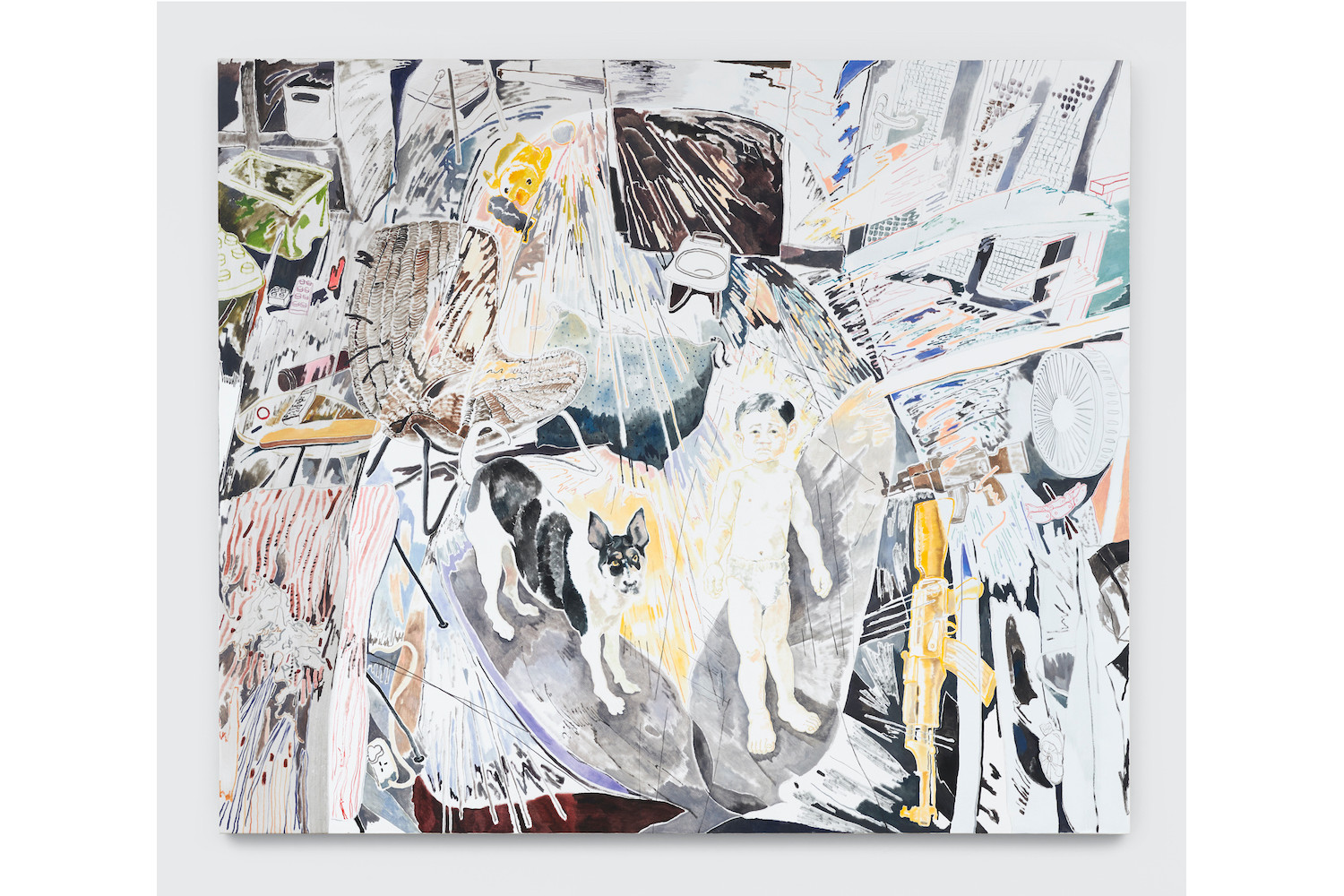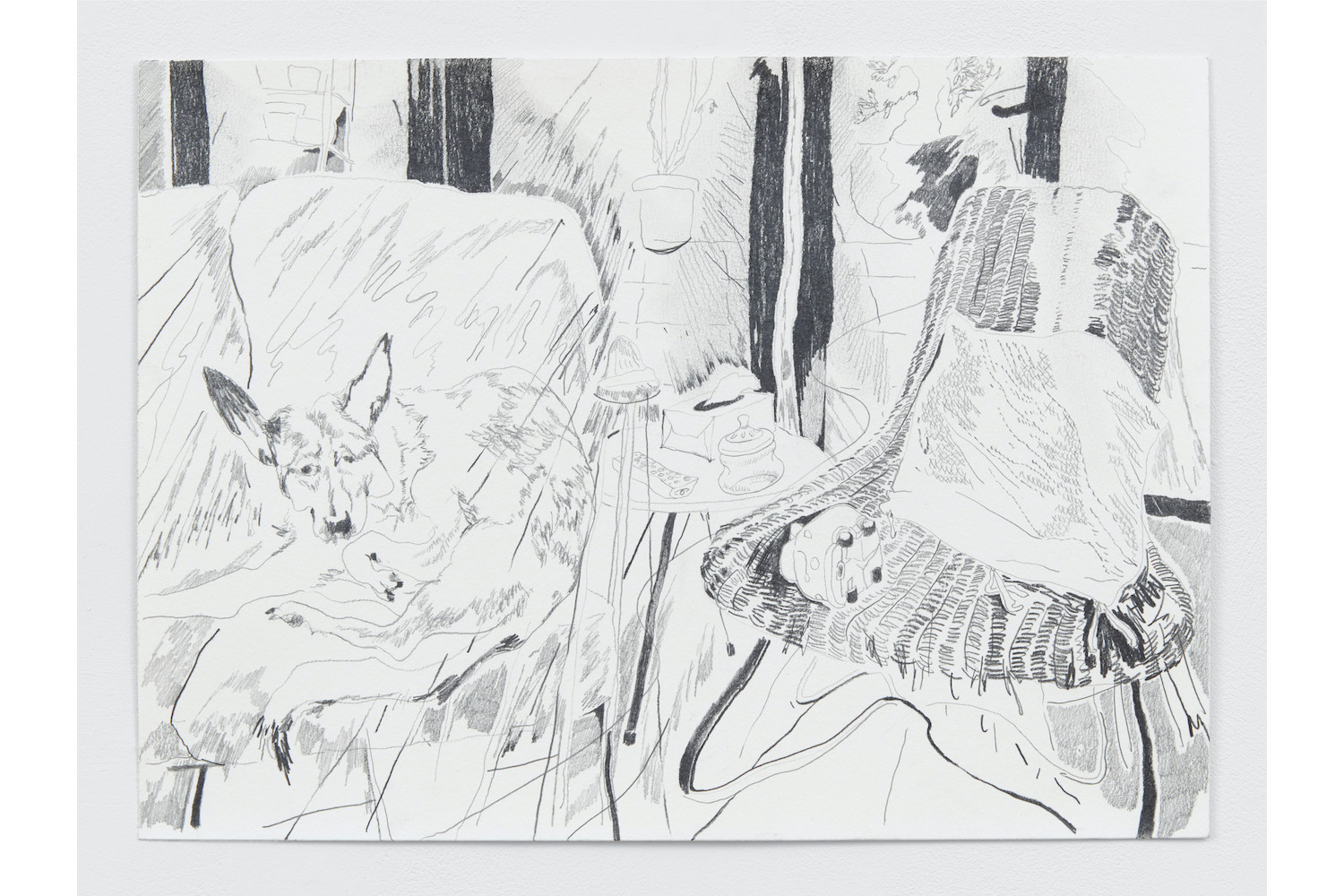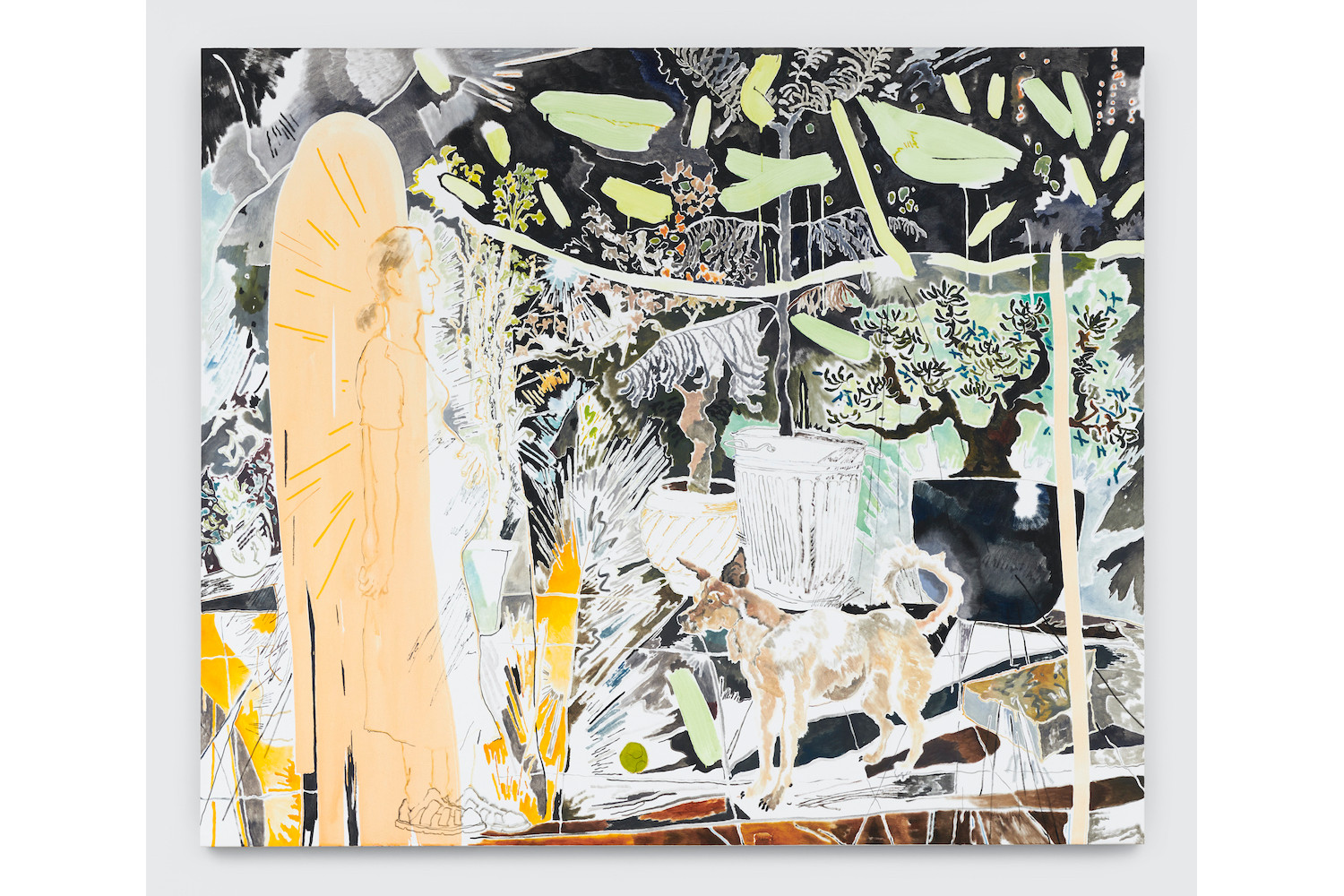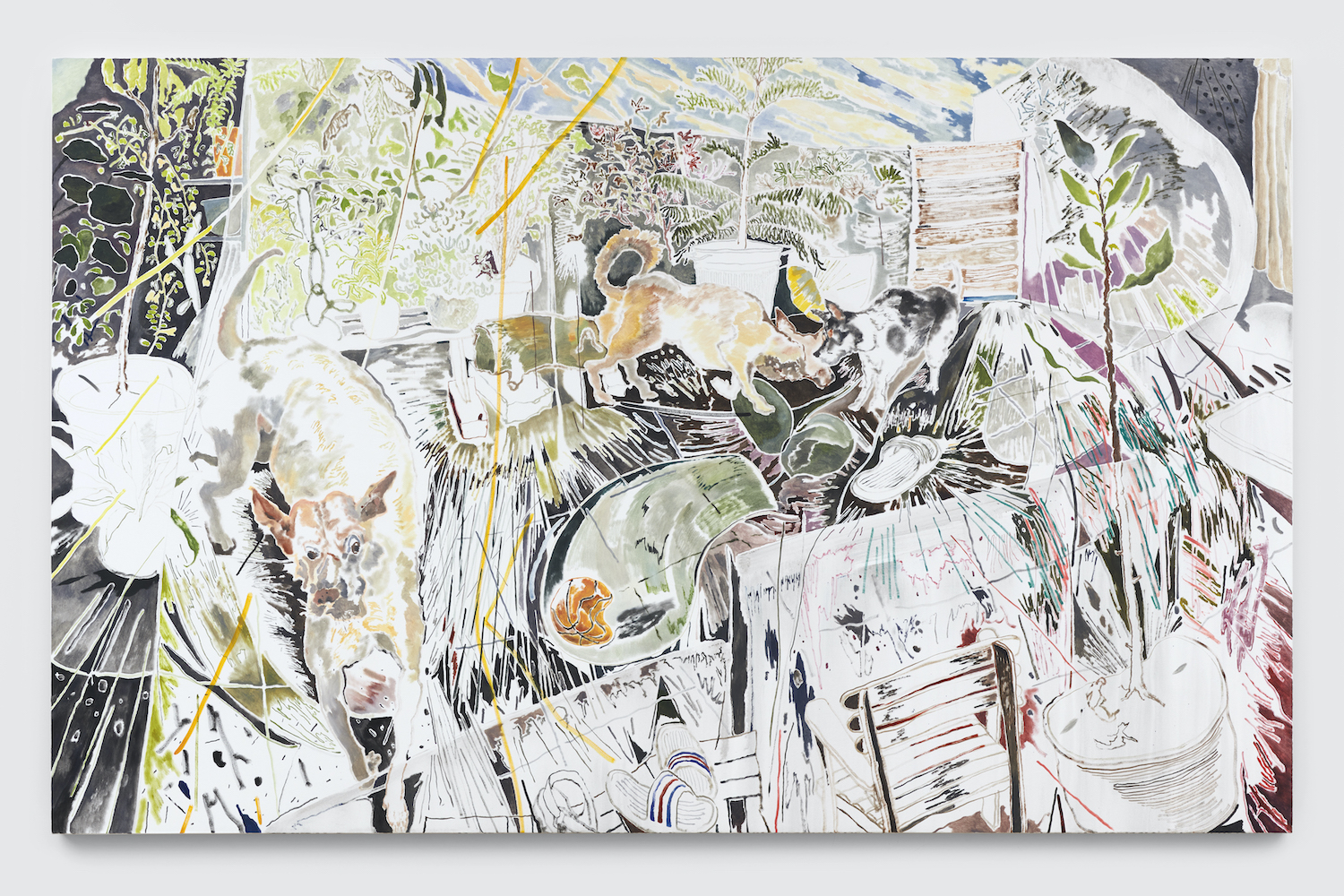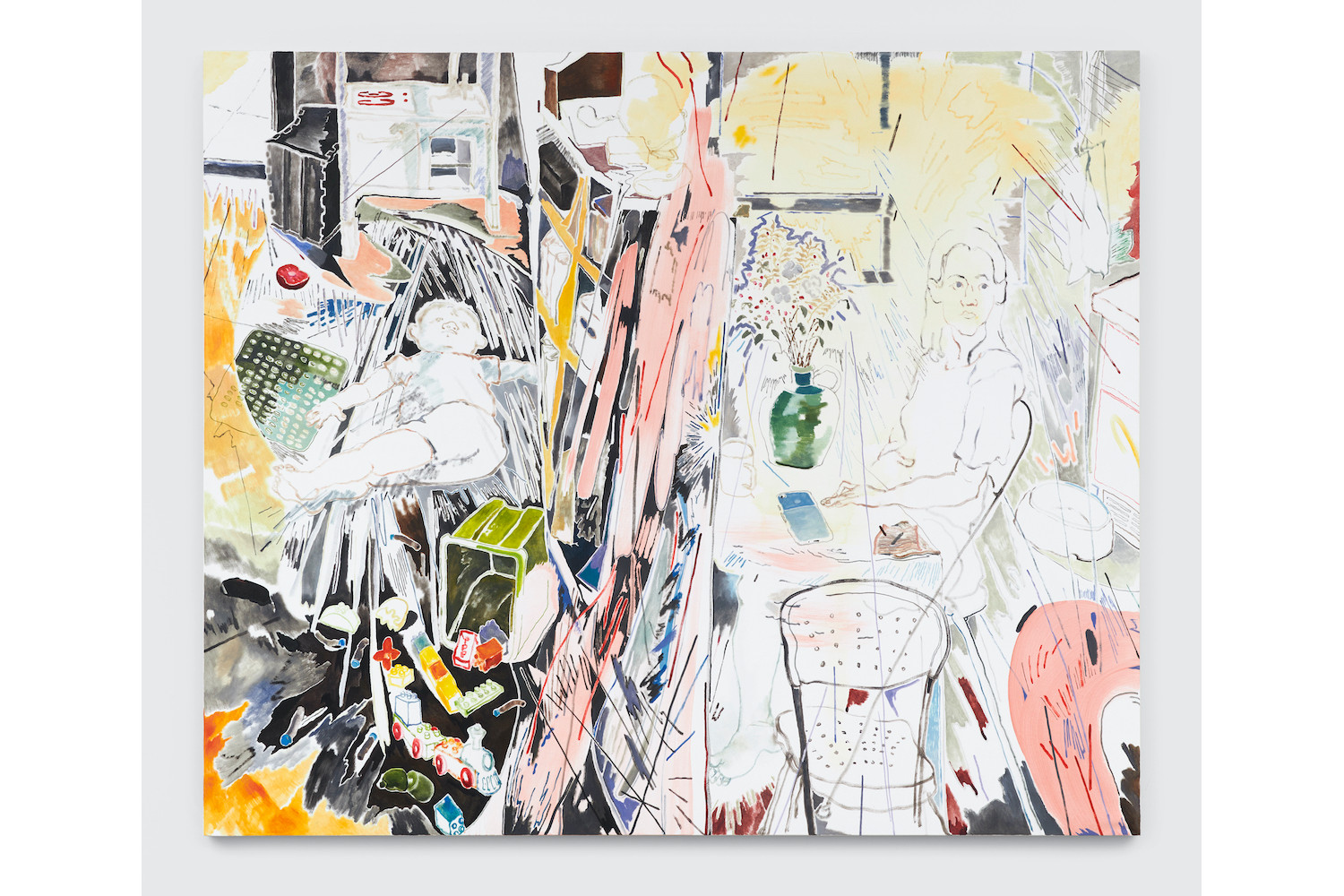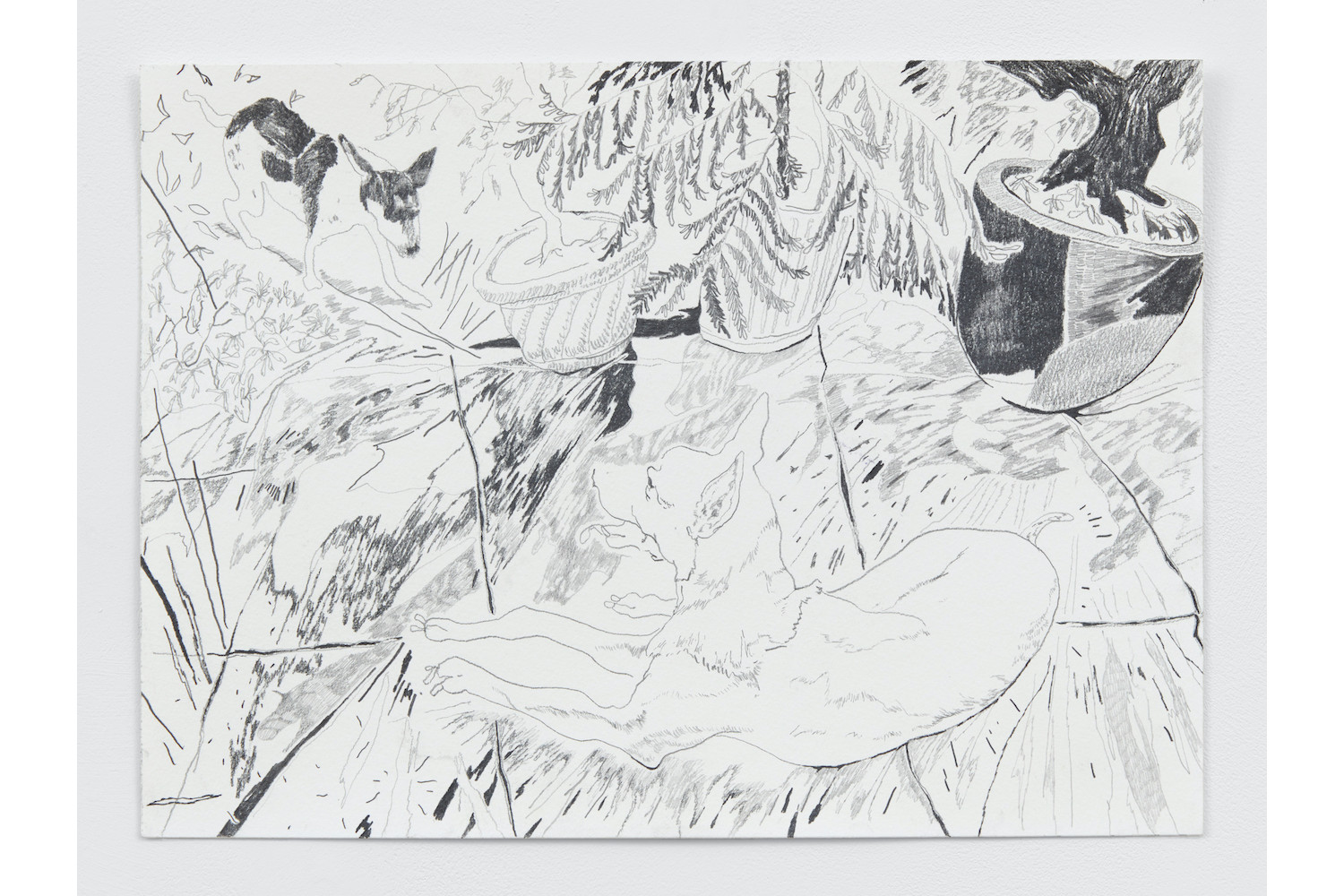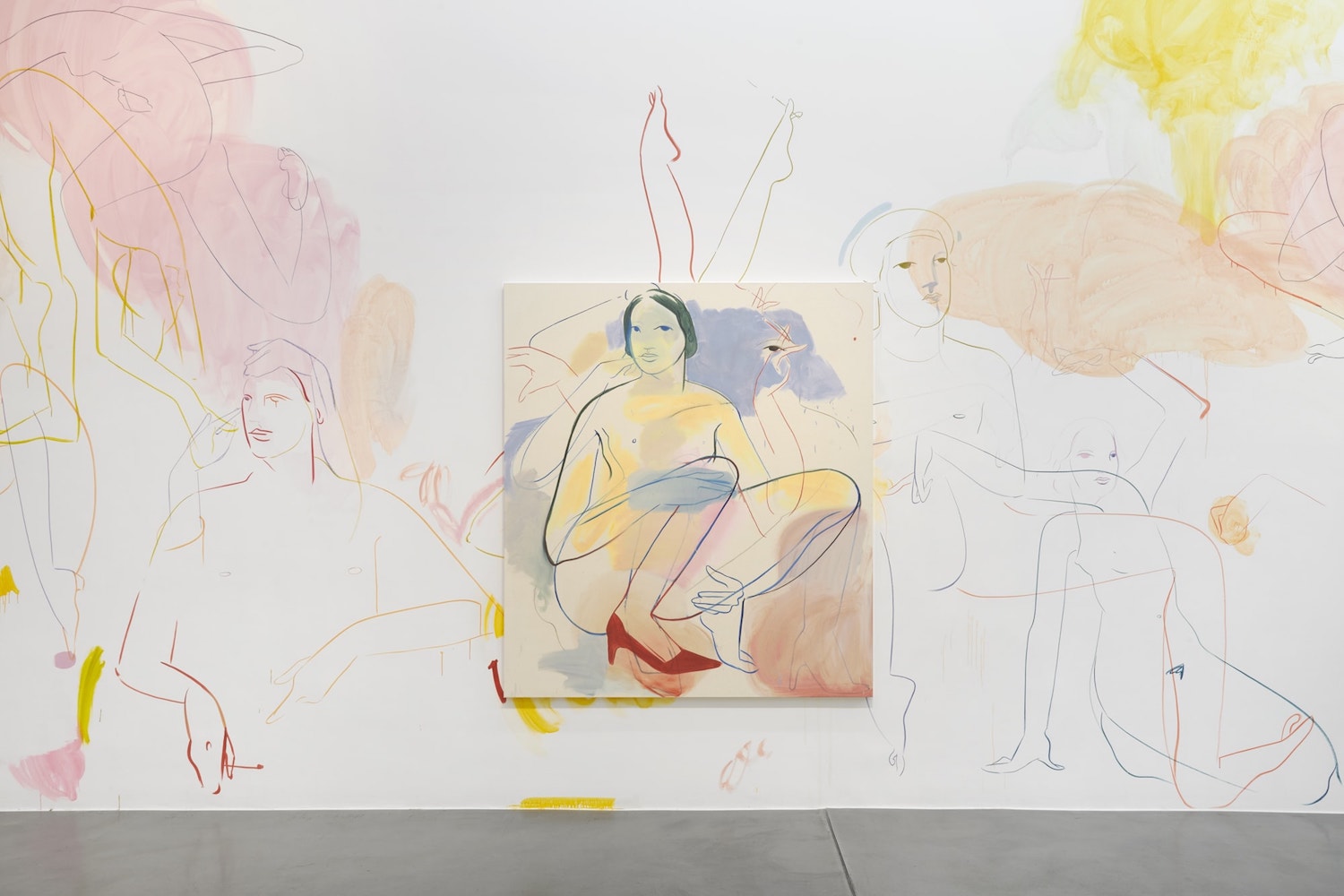On Monday, June 15, the wheels of the London art world — those which had so unceremoniously been halted almost three months prior — began to turn again. While many gallery openings marked a resumption of former programming, Simon Lee Gallery’s exhibition of works by Hong Kong–based visual artist Chris Huen Sin Kan, titled “Puzzled Daydreams,” proved an exception; opening that Monday and running for a mere eighteen days, it appeared to be an attempt to rustle up activity among the art-hungry in an otherwise slowly emergent British landscape. With this is mind, Huen’s recent work was a natural choice: reveling in a domestic surrealism, the art on display is crossed by valances that echo our collective unsurety about our nascent post-lockdown paradigm, driving our concerns (quite literally) home.
Huen’s practice of interweaving the mundane with elements of abstraction is not a new development; work from as early as 2013 prefigures this melding of imagery. However, the insertion of his children into his art, along with the sprawling apparatus of childhood, makes clear a mental dualism and depth otherwise absent from some earlier work. As LEGO pieces abound and shocks of sonic blue and yellow careen around the canvas in works like Doodood, Balltsz, and MuiMui (2020), Huen keeps a wholehearted regression into childhood at bay with his fidelity to his dogs’ animalism; Balltsz, chubby and aloof, confronts the viewer with his vacant gaze, exuding a need for human care. A latent desire to absolve oneself of responsibility or worry, embodied in the “childish” imagery, is negated not by the weight of duty, but by reality — Balltsz the dog, a victim of its own natural helplessness, is not at fault.
Huen expands on these delineations between adult- and childhood by exploring the relationship between children’s toys and their sinister real-world referents. In Balltsz and Joel (2020), the menace of the machine guns standing next to Huen’s infant son Joel is only offset by a bright yellow toy bird mid-flight in the opposite corner of the canvas. The guns, though not directly integrated into the scene, are notions of fact that again undergird the work; the reality of violence inherent to weaponry simply is, despite a child knowing no harm in their mimetic playthings. Still, Huen is careful to hold a sense of childlike innocence in the balance — the yellow toy bird in the corner still soars.
Having demonstrated his ability to make sense from the interplay of oppositional imagery, Huen occasionally allows the lines between maturation and devolvement to blur completely, displaying an insouciant humor. In works like MuiMui (2020), competing notions of responsibility and indulgence coalesce into a coherent scene; as the dog MuiMui appears to lie in wait for Huen to sit alongside him, completing a man-and-his-dog scene, a toy truck awaits the artist in his presumptive chair, while a milk bottle sits where his glass of whisky otherwise would. Having carefully staked out the fraught boundaries between man and child elsewhere, Huen here relieves himself of his imagery’s symbolic burden, allowing the scene to break down in comedic confusion.
Despite the specificity of these works — they are of course drawn straight from Huen’s own life — many seem to bear important lessons for the public. Foremost, the viewer is forced to reconcile their own abstract conception of the world with that of the undeveloped or incapable. Looking into the crazed, bestial eyes of Doodood in Doodood, MuiMui, and Balltsz (2020), both the dog’s almost-total ignorance of the world, as well as its inability to take care of itself, become painfully clear. Similarly, as Huen’s son Joel, dressed only in a diaper, gives a wanting look toward the viewer in Balltsz and Joel (2020), the child’s knowledge of only that which is necessary or immediate forces a recalibration of the viewer’s own sense of exigency. As we collectively face the dizzying spirals of future unknowns, Huen, in his portrayal of subjectivities, entirely unburdened by fears of what cannot be foreseen, delivers a simple but important message: sometimes you can only worry about what’s right in front of you.
But the logical extension of this thinking is a reckoning with fact: responsibility, and its bedmate, anxiety, are parts of our reality, unnegotiable and without blame; of course, neither the dog nor the child is at fault for needing an adult’s help. Likewise, the difficulties of the current moment are nobody’s singular fault; they’re just part and parcel of our lived experience. So instead of working ourselves into knots, Huen implores the viewer simply to act; armed with the clarity of reality, as the old dictum notes, clear minds and open hearts cannot fail.

